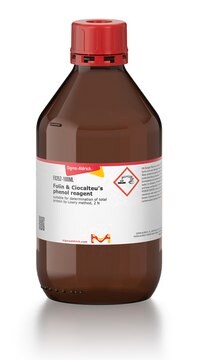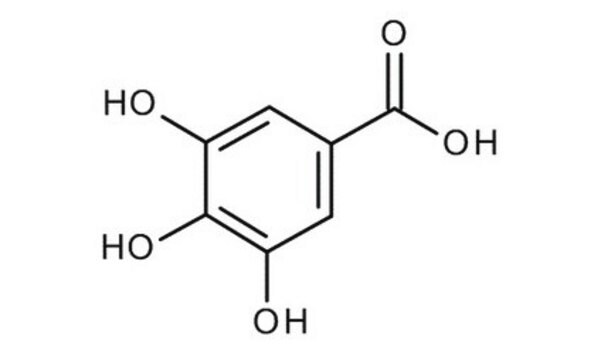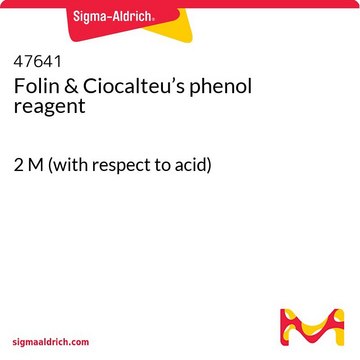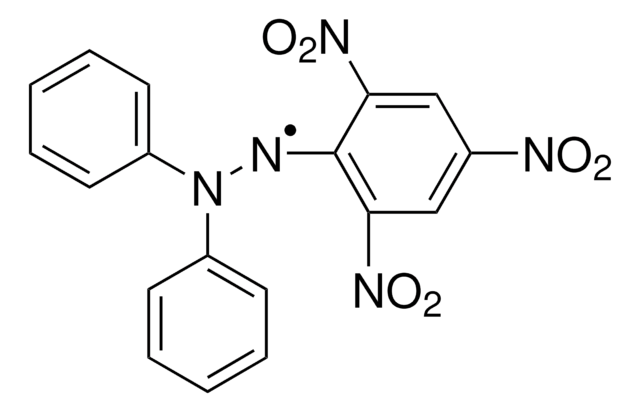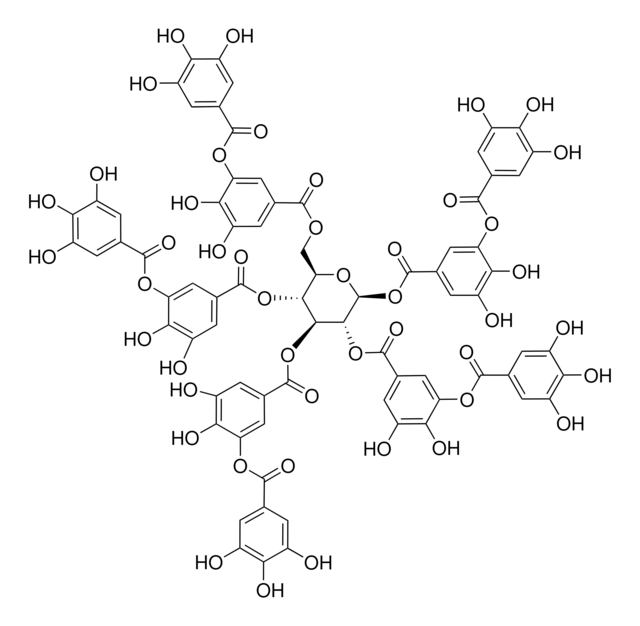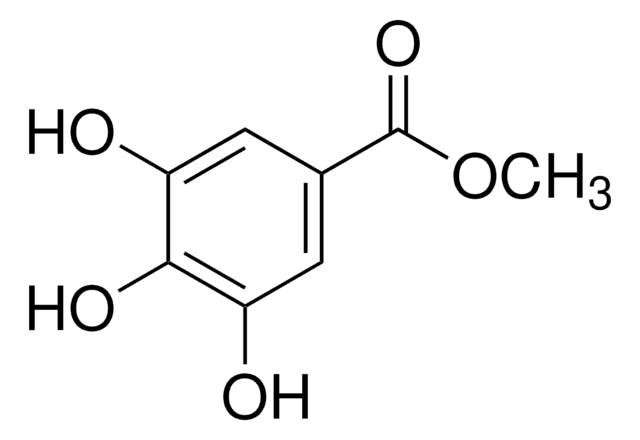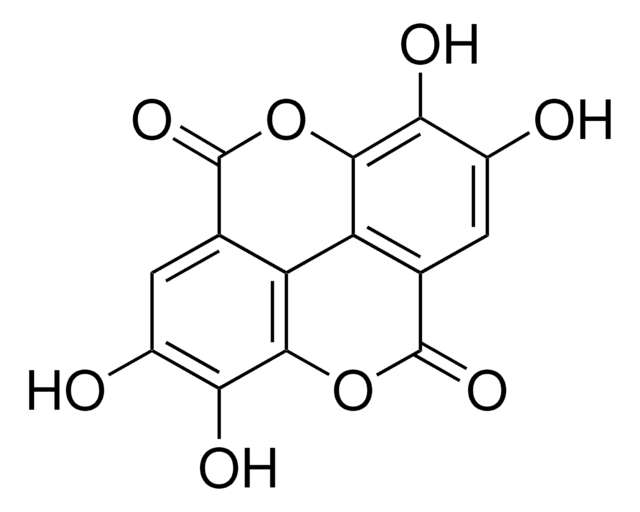Wichtige Dokumente
G7384
Gallussäure
97.5-102.5% (titration)
Synonym(e):
3,4,5-Trihydroxybenzoesäure
About This Item
Empfohlene Produkte
Biologische Quelle
plant fruit
Qualitätsniveau
Assay
97.5-102.5% (titration)
Form
powder
Methode(n)
HPLC: suitable
Farbe
white to beige
mp (Schmelzpunkt)
251 °C (dec.) (lit.)
Löslichkeit
ethanol: 50 mg/mL, clear to slightly hazy, colorless to faintly yellow
Eignung
suitable for UV spectrophotometry and general use
suitable for absorption spectrum analysis
Anwendung(en)
agriculture
metabolomics
microbiology
vitamins, nutraceuticals, and natural products
vitamins, nutraceuticals, and natural products
SMILES String
OC(=O)c1cc(O)c(O)c(O)c1
InChI
1S/C7H6O5/c8-4-1-3(7(11)12)2-5(9)6(4)10/h1-2,8-10H,(H,11,12)
InChIKey
LNTHITQWFMADLM-UHFFFAOYSA-N
Suchen Sie nach ähnlichen Produkten? Aufrufen Leitfaden zum Produktvergleich
Verwandte Kategorien
Allgemeine Beschreibung
Anwendung
- als Standard für die Quantifizierung von extrahierbaren Phenolen durch externe Kalibrierung
- als Standard zum Bestimmen des Gesamttanningehalts von Eichenwurzelpulver mittels Folin-Ciocalteu-Verfahren
- als Phenolsäure zum Untersuchen ihrer antiviralen, antibakteriellen, zytotoxischen und antimykotischen Wirkung in vitro
Biochem./physiol. Wirkung
Leistungsmerkmale und Vorteile
- Hochwertige Verbindung, geeignet für verschiedene Forschungsanwendungen,
- Kompatibel mit HPLC- und Massenspektrometrie-Techniken
Sonstige Hinweise
Signalwort
Warning
H-Sätze
Gefahreneinstufungen
Eye Irrit. 2 - Skin Irrit. 2 - STOT SE 3
Zielorgane
Respiratory system
Lagerklassenschlüssel
11 - Combustible Solids
WGK
WGK 1
Flammpunkt (°F)
Not applicable
Flammpunkt (°C)
Not applicable
Persönliche Schutzausrüstung
dust mask type N95 (US), Eyeshields, Gloves
Hier finden Sie alle aktuellen Versionen:
Besitzen Sie dieses Produkt bereits?
In der Dokumentenbibliothek finden Sie die Dokumentation zu den Produkten, die Sie kürzlich erworben haben.
Kunden haben sich ebenfalls angesehen
Protokolle
HPLC Analysis of Polyphenols in Nero d'Avola Red Wine on Discovery® HS C18 (UV 280 nm)
Coumaric acid; Quercitrin; Myricetin; Quercetin
Unser Team von Wissenschaftlern verfügt über Erfahrung in allen Forschungsbereichen einschließlich Life Science, Materialwissenschaften, chemischer Synthese, Chromatographie, Analytik und vielen mehr..
Setzen Sie sich mit dem technischen Dienst in Verbindung.
